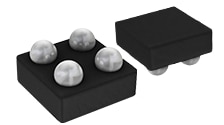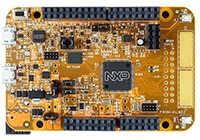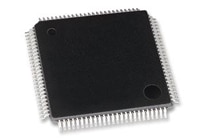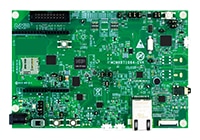IoT III: IoT Security
The element14 ESSENTIALS of IoT Security covers the fundamentals of IoT security, including types of security threats, standard security algorithms, error correction, cryptography, and security from end-nodes through applications. To extend the knowledge covered in the main module, this supplementary guide discusses the types of related components or development boards available for prototyping new products or building projects.
Secure Element
The A71CH is a ready-to-use solution providing a root of trust at the IC level. It is a platform capable of securely storing and provisioning credentials, securely connecting IoT devices to cloud services, and performing cryptographic node authentication. The A71CH solution provides basic security measures protecting the IC against many physical and logical attacks. It can be used with various host platforms and host operating systems to secure a broad range of applications.
The OM3710/A71CHARD is a complete development kit for the A71CH Plug & Trust secure element, enabling easy and fast development of secure IoT applications. It contains an A71CH-MiniPCB board connected to an Arduino-R3 compliant board thru I2C male/female 4-pin strip connectors. There is also the option to connect and test an A1006 secure authenticator device (contained in OM13589) to the same I2C bus.
Secure Authenticator IC
The A1006 Secure Authenticator provides a security solution to prevent counterfeits. With low power consumption, a small footprint, and flexible interfaces, the A1006 offers superior security that is easy to integrate into a range of electronic devices that are common targets of electronic counterfeiters. The A1006 Secure Authenticator IC is built with strong protection against various invasive and noninvasive attacks. The IC is manufactured in NXP's certified secure manufacturing facilities to prevent key leakage during the fabrication process and certified secure servers are used to create and provision die-individual keys and certificates.
The Rapid IoT Prototyping Kit is a comprehensive, secure and power-optimized solution designed to accelerate prototyping and development of an IoT end node. It integrates 11 NXP devices (microcontroller, low-power connectivity, sensors, NFC, secure element, power management, interface) in a small form-factor hardware design, and combines them with proven software enablement (e.g., drivers, RTOS, middleware, cloud connect) and a web IDE with GUI based programming.
|
|
MCU with basic security hardening
The FRDM-KL82ZFRDM-KL82Z is a Freedom development board, based on the KL82 MCU family, featuring high performance, encryption features, and ultra-low power capabilities.
The LPC54005JBD100E is based on the NXP LPC540xx family of ARM Cortex-M4 based microcontrollers for embedded applications. The ARM Cortex-M4 is a 32-bit core that offers system enhancements such as low power consumption, enhanced debug features, and a high level of support block integration.
The i.MXRT1064-EVK development platform is based on the i.MX RT1064 series crossover processor. The i.MX RT1064 is a new processor family featuring NXP’s advanced implementation of the Arm Cortex-M7 core, which operates at speeds up to 600 MHz to provide high CPU performance and best real-time response. The i.MX RT1064 processor has 4 MB on chip Flash and 1 MB on-chip RAM. 512 KB SRAM can be flexibly configured as TCM or general-purpose on-chip RAM, while the other 512 KB SRAM is general-purpose on-chip RAM.
MPU/AP with basic security hardening and TrustZone
The Layerscape LS1012A Freeway (FRWY-LS1012A) board is a development platform based on the QorIQ LS1012A processor, which is optimized for battery-backed or USB-powered, space-constrained networking and IoT applications. It integrates a single Arm
Cortex
-A53 core running up to 1GHz with a hardware packet forwarding engine and high-speed interfaces to deliver line-rate networking performance in an ultra-small size envelope at 1W typical power dissipation. The LS1012A incorporates the same Trust Architecture and software compatibility of higher-tier QorIQ LS family devices, enabling scalable, secure applications that leverage a common 64-bit software platform. LS1012A contains one 64-bit Arm
Cortex
-A53 core processor with the following capabilities:
|
*Trademark. NXP is a trademark of NXP Semiconductors N.V. Other logos, product and/or company names may be trademarks of their respective owners.











